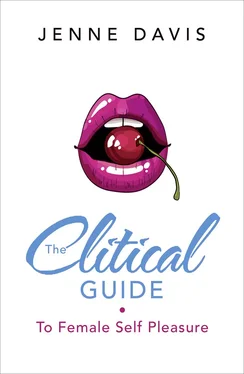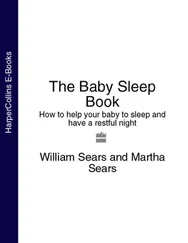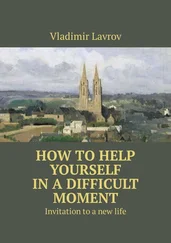For a while electric vibrators were acceptable and commonplace in most American homes, but that would change with the advent of the silent movie. Silent movies were not just used to make Charlie Chaplin a superstar of his time, but also by some enterprising young men, who saw their potential to provide pornographic images. As the trade in pornography grew and images of what were considered loose, wanton women using the humble electric vibrator began to grow, the popularity of the Personal Massager became tarnished and over time vibrators all but disappeared from the American home. For now…
Late 20h Century
In spite of anti-masturbation zealots like Graham and Kellogg, masturbation was by all accounts still a popular, if secret, pastime. During the 1940s and ‘50s the interest in people's sexual habits began to grow, at least from a scientific and medical standpoint. The most famous of the early pioneers of American sexuality, who was not afraid to ask Americans about their sexual habits was Alfred Kinsey. His work in the ‘40s and ‘50s included studies that asked Americans what were then considered shocking questions, such as, did they masturbate to orgasm? These studies revealed that at the time 94 per cent of American men who were asked did masturbate to orgasm, while approximately 40 per cent of American women reported that they also masturbated. Kinsey's research was, at the time, groundbreaking and in many ways opened the doors to modern-day sexual research.
In the early 1970s there was a veritable explosion in the interest surrounding America's bedroom habits. By this time we had seen the sexual revolution, women had access to the Pill and the feminist movement was gaining momentum, all of which help contribute to that interest. For example: Shere Hite surveyed 1,000,000 American women and the results were then published in a report that was known as the Hite Report . This was a document consisting of 510 pages that detailed the masturbation habits of the respondents. Whenever I go back and read the Hite Report of 1976, I'm always struck by how little attitudes to masturbation have changed since that report was done. Many of the answers to the survey mirror questions and comments I get from Clitical visitors to this day. Many women back then reported a feeling of guilt, even when they physically enjoyed the act of masturbating, and any subsequent orgasm, but we will delve into that subject a little later. What Hite did discover was this: 82 per cent of those who responded to the survey reported masturbating, so women were doing it for themselves, albeit then often feeling guilty about it.
At the same time as Hite was moving and shaking the world of female sexuality, another prominent figure was also emerging. Betty Dodson, who is now often referred to as the 'mother of masturbation’. Dodson was busy at this time extolling the benefits of masturbation, and yet her teaching encompassed so much more. Dodson would actively encourage women to embrace their vulvas and to stop thinking of them as something dirty, instead realizing that they were as unique and beautiful as their owners. I can recall the first time I ever saw her now-famous collection of pictures that, as an artist, she had drawn. Each one depicted a real woman's vulva and highlighted beautifully that every one was different. Dobson was the first sex educator to actively promote the use of the vibrator when it came to masturbation.
During the ‘70s and ‘80s we began to see a slight change in attitudes toward masturbation in general. Whilst it was still not something that you could openly discuss with your parents, or even your friends, the shame and guilt that for so long had been a part of something that was a natural and healthy act of sexuality began to subside, at least a little.
This change in the ‘90s, when we once more saw something of a backlash against not just masturbation, but open sexuality in general, culminated in an incident that featured the then Surgeon General, Jocelyn Elders, who agreed that masturbation should be included in any meaningful sex education programs that were to be taught in either schools or colleges across the USA. A common misconception about that incident was that Dr Elders was condoning masturbation. She was, in fact, merely agreeing with the finding of the day as opposed to actually recommending or promoting masturbation. As a result of the media coverage of this event, President Clinton was left with little choice but to ask Dr Elders to step down from her post.
As is often the case when an incident such as the detailed one above occurs, there is a backlash. In this case that backlash took the form of one of the earlier female-friendly sex-toy stores in San Francisco, ‘Good Vibrations’, taking a stand. They declared that from May 1995 henceforth, May would be forever known as Masturbation Month and this is still the case at the time of writing. The masturbation movement was just getting underway, though, and when ‘Good Vibrations’, ‘Babeland’ and ‘Grand Opening’ teamed up in 1999, creating the very first national, Masturbation-a-Thon. The first of these events took place at San Francisco's campus theater and has, over the years, raised money for many sex-positive-based charities. In 2006, London held its first-ever live Masturbate-a-Thon, with Montreal, Canada, following suit in May 2013. All of these events have raised the profile of the much-maligned practice of masturbation and helped to shape modern-day attitudes toward masturbation.
Conclusion:
Whew, that was one journey! But as you can see from this brief and somewhat abbreviated history of masturbation, it is slowly becoming more acceptable, though there is a lot of work yet to be done before we can say it is acceptable to masturbate or, more importantly, to discuss the subject amongst our peers. It’s also possible to see where many of the myths that surround self-pleasure and I figured it might be a good time to look at some of the more popular and persuasive ones that still persist.
CHAPTER 3
Masturbation Myths and Realities
According to Webster’s dictionary the definition of a myth is this: 'a widely held but false belief or idea.' And, as we saw when we took our spin back in time, masturbation at various times has not just been considered as dangerous, but in some cases fatal. So if you think about it, it kind of makes sense that so many myths would have grown up around the practice. I'm pretty sure that you are familiar with many of these myths, but just in case, let's take a quick look at some of the more common ones.
You will go blind
You will grow hair on the palms of your hands
You will no longer be a virgin
It's dirty
It will stunt your growth.
Now consider this for a moment. If, according to the Hite Report , around 80 per cent of women choose to masturbate at some stage in their lives, the female species, as we know it, should consist of blind, hairy-palmed midgets. I think it's fair to say that I have just made my point that for the most part these myths are just that, myths, or stories told by parents to curtail their young offspring from engaging in a practice that they honestly believed would cause them real harm. These stories have persisted over generations and in many cases have taken on a life of their own.
While on the surface these myths often sound funny when applied to our modern-day lives, what they can do is lead to a great degree of guilt still being felt by a large percentage of the female population. It's also worth noting, as we discovered earlier, that the majority of these myths were directed at the guys and, to some degree, they still are. We have a tendency to forget that it has only been over the last hundred or so years that women have been seen as anywhere near equal to men and this is also true in the world of sex. Women and their sexual habits were just not as important as those of their male counterparts, and it's easy to see why much of the older sexuality texts were focused on the guys.
Читать дальше












